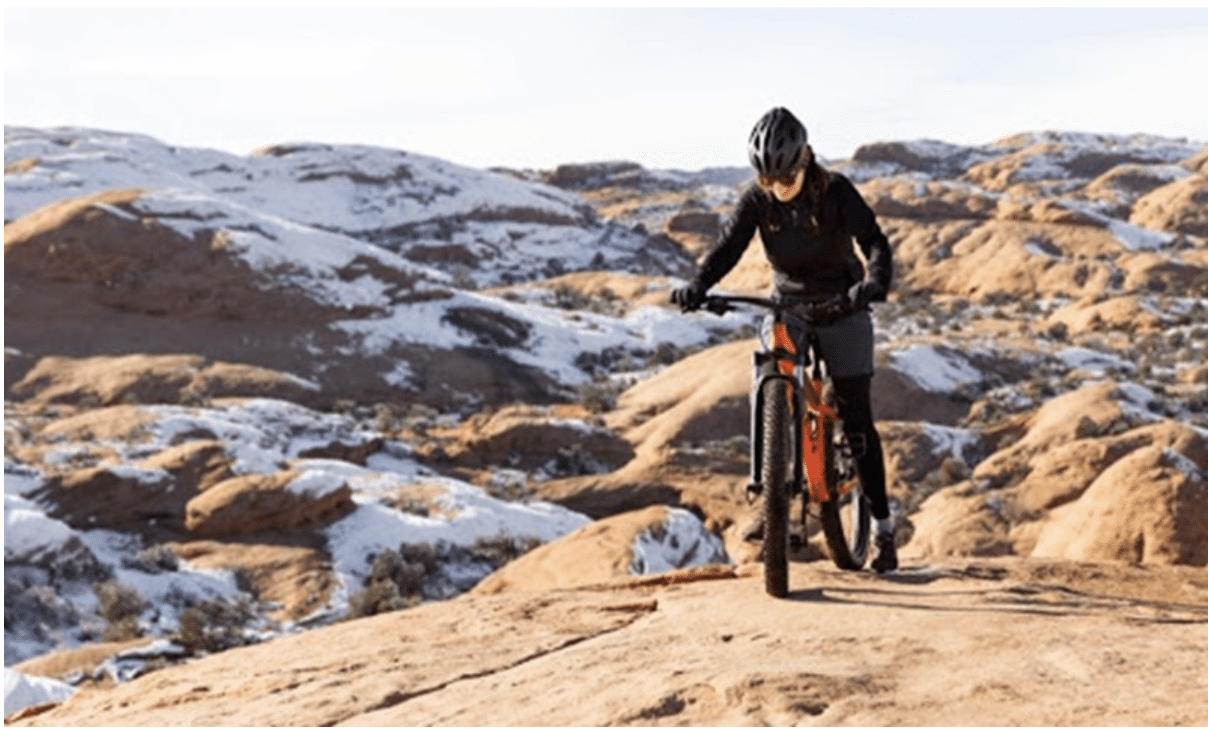When it comes to mountain biking in the winter then you need to be careful because the rainy and muddy winter weather can cause issues for your mountain bike, leading to wear, parts seizing, or decreased performance compared to other seasons.
Here are some helpful tips to winterize your bike, ensuring better rides and simpler maintenance in the long run.
Tyres
Mountain bike tires are specifically crafted to tackle diverse terrains, and their tread patterns significantly influence a bike’s handling.
During winter, trails become muddier, leading the best winter mountain bike tires to feature spikier and more open treads compared to summer ones. This specialised design aids in finding traction through the top layer of sloppiness.
Reducing tire pressures on your mountain bike can enhance grip, but this adjustment also raises the potential for rim damage.
Studded tires offer a solution for icy conditions, providing unique riding opportunities in areas with frequent snow and ice.
Drivetrain
During winter rides, your drivetrain faces accelerated wear due to the increased grit from muddy trails infiltrating the components.
Regularly cleaning your chain and applying a quality wet chain lube can extend the lifespan of your drivetrain components and contribute to a smoother riding experience.
Certain riders choose more budget-friendly drivetrains for winter riding. This approach means that any worn-out parts due to exposure to mud and grit would be less costly to replace.
Lights
Riding at night offers the chance to reclaim your evenings, keeping you out on the trails when the winter evenings beckon you indoors.
Top-notch mountain bike lights empower you to tackle trails with the assurance of riding in daylight. The ideal setup usually includes a bar-mounted light complemented by a helmet light for comprehensive forward and line-of-vision visibility.
Grips
During damp rides, moisture has a knack for seeping under your grips, leading to potential slippage. Lock-on grips resolve this issue by employing a clamp mechanism to secure the grips firmly. However, if you opt for standard or foam grips, a helpful tactic involves wiring them using thin metal wire at both ends of each grip to prevent any unexpected slipping.
Mudguards and Fenders
Mountain bike mudguards vary in styles, catering to different bike types and needs. Guards mounted on the down-tube provide excellent defence against front-wheel spray, whereas fork-mounted ones prevent water from splashing up, keeping your face clean. Rear mudguards are essential for blocking rear-wheel spray, ensuring both your back and your chamois stay dry.
Installing mudguards on full-suspension bikes can pose challenges, particularly when also using a dropper post.
Hubs
Before winter sets in, attend to your user-serviceable hubs by disassembling, cleaning, applying grease, and rebuilding them. Moisture and dirt are common culprits for hub issues, so a pre-winter service should prevent potential problems later on.
Opt for high-quality grease for the hubs and use thin oil for the pawls located at the end of the cassette body. Be cautious with pressure washers around sealed cartridge bearing hubs, as water and bearings don’t mesh well. Avoid directing the jet onto the hub to prevent any damage. Check out our guidelines on safely pressure washing your bike for further tips.
Cables
When trail grit gets into cable housings, it can compromise the crispness of your shifting, especially during the wetter months. To ensure optimal performance throughout winter, consider replacing both the inners and outers of your cables beforehand.
Some cyclists opt for a controversial solution of using light oil in the housing to minimise friction. However, this method might draw in more dirt and debris, potentially causing further issues with your cable housing.
Seatposts
Moisture and dirt finding their way into your frame can lead to a seatpost seizing in place. To prevent this, cleaning the seatpost and the contact area within the frame can eliminate any trapped debris. Afterward, applying a bit of grease or carbon assembly paste before reinserting the seatpost helps prevent future seizure.
For dropper posts, regular cleaning of the shaft and applying silicone-based spray to lubricate the seals is recommended to maintain smooth functionality.
Brakes
In winter conditions, brake pads face accelerated wear due to grit, causing faster deterioration of rims and rotors compared to summer riding. To prevent disc brake noise and maintain optimal braking, it’s wise to clean your mountain bike’s disc brake rotors regularly and replace pads before they wear down to the metal.
While organic pads tend to perform better in wet conditions, they have a shorter lifespan compared to sintered pads. For further details, check out our comprehensive guide on disc brake pads.
Final Words
Preparing your mountain bike for winter isn’t just about safeguarding against the season’s challenges; it’s a pathway to uninterrupted, thrilling rides amidst the chill. Equipped with the right tires, drivetrain care, lighting, and thoughtful adjustments, your bike transforms into an all-weather companion. These preparations ensure not only better performance but also simpler maintenance, allowing you to relish every trail, regardless of the weather forecast.

